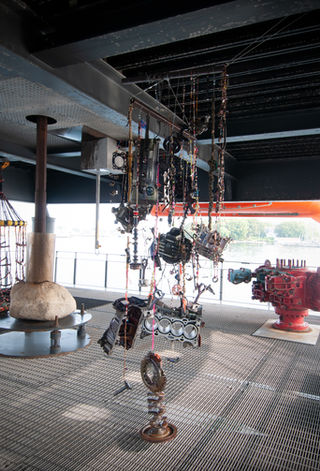
JUST-MOB-NET
The Just Mobility Transitions Network (JUST-MOB-NET) will serve as an umbrella for engaged research and practice on socially just low-carbon mobility transitions taking place in and across academic institutions in Western Norway. This region is at the global forefront of such a sectoral transition, with the electrification of multi-modal transport solutions accelerating. On the one hand, this development is welcome for urgently needed climate change mitigation. On the other hand, rapid transitions are accompanied by the risk of increasing inequity and exacerbating political polarisation. These risks are evident in controversies over the allocation of subsidies for electric vehicles, congestion tolls for city center traffic, the use of public space by micro-mobility e-scooters, and reduction in urban car parking. Yet some of the same developments make Western Norway the global capital of electric ferries, cars, and increasingly cargo bikes, catapulting our region to the epicenter of low-carbon mobility transitions, thanks to a fully digitalized electric grid powered by renewable energy sources that continue to grow.
The biannual workshop of the Energy Anthropology Network kicked off on 22 August 2021 with the launch of a co-produced art exhibition by Rjukan Solarpunk Academy, as part of the Norwegian Just Mobility Transitions Network funded by the University and College Network for Western Norway. Having started in 2020, the collaboration with JUSTMOBNET marked one of RSA’s early projects, showcasing our strategy of engaging with cutting-edge academic research as a platform for artistic production.
What transpired were twin complementary exhibitions. Martin Andersen took the point of departure in an old fossil fuel car he had patched up, that finally broke down over the Haukeli mountain pass in Spring 2021. In Rjukan, he worked with hundreds of kilograms of car spare parts in tactile engagement with the salvage frontier of automobility. This manifested in a reimagining of car remnants in another setting altogether, namely on an oil rig that comprises part of the Norwegian Petroleum Museum building. A meta-comment on the tight historical link between petroleum as a commodity and the automobile as a technology, this became the installation ‘Uro’, a Norwegian play on words meaning both ‘restless’ and a ‘mobile’ object in suspended animation. With Norway being a global leader in the transition to electric cars (with the highest per capita rate), this clustered suspension of old car components invited the audience into a space for deep reflection, standing out on the oil rig gazing out at the Ryfylke fjord with the water glittering below the mesh floor, while the spare parts clanged in the breeze.
Margrethe Brekke was captivated by the idea of a National Association of Bus Users (Bussbrukernes Landsforening). Brekke wondered why she – herself unlikely to buy a luxury electric car – had read the biography of Elon Musk who led the electric car manufacturer Tesla, but had not even heard of the world’s largest electric bus manufacturers, such as Yutong, BYD and VDL. This sparked a foray into the history of electric buses, including their technical specifications. Brekke assembled these details with material from a shutdown factory in Rjukan, a nod to the post-industrial legacy of the setting in which this exhibition took shape. The five textiles enveloped walls in various parts of the Norwegian Petroleum Museum, juxtaposed with its sleek interiors and solid industrial infrastructures. Along with these textiles, Brekke foregrounded a propaganda-style announcement of the National Association of Bus Users, to symbolize the possibility of meaningful engagement with the challenge of transitioning to a just low-carbon mobility future.
Based on a text by Siddharth Sareen.









